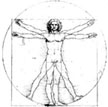

Decorative fonts (also called Ornamentals) have been around since the 1800s. They are often used for titles, headings, and other display purposes. They are notoriously tiring to read in any large quantity. Ironically, the World Wide Web and the proliferation of digital type tools have made decorative fonts some of the most commonly developed fonts today. On the other side of the coin, while there are a large number of new, decorative fonts, they do not share the widespread distribution and use that the older, classic fonts enjoy.

The fanciful shapes of the letters make Harrington an interesting font to look at but it would be very tiring to read a lot of it. Harrington is similar to the captioning font used in classic silent films.

Parisian is one of a series of fonts named after places. The tall ascenders and sharp contrasts attempt to invoke the art deco feeling of Paris in the 1920s.

Metropolitaines has a Maxwell Parish feel to it, evocative the 1930s. Used as a title or heading for a magazine article, Metropolitaines, Parisian, and Harrington call up associations for the viewer that cannot be achieved an any other way.

Rough Edge is one of the new digital fonts that has been designed entirely on and for a computer screen. It is one of a series of fonts referred to as "grunge" fonts "Grunge" fonts are popular with a particular youthful subculture in the U.S. Other fonts in the "grunge" category include fonts named "crack babies", "acid bath", and "hacked."

